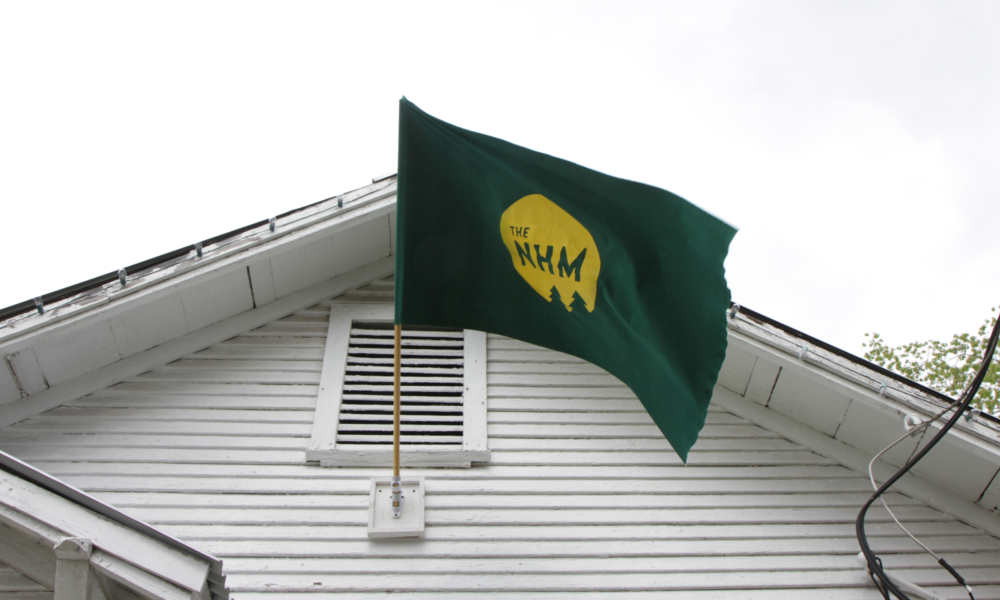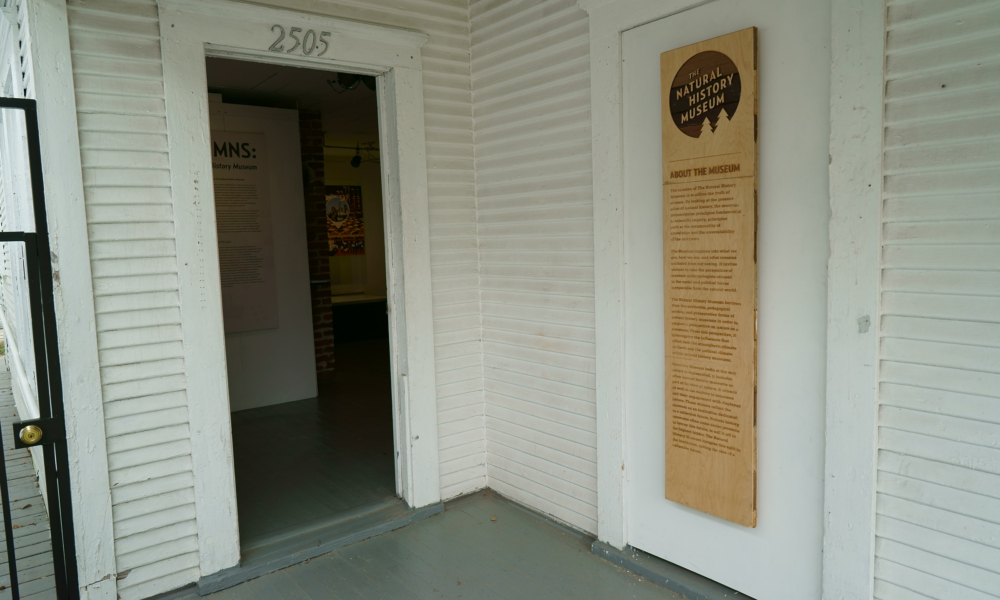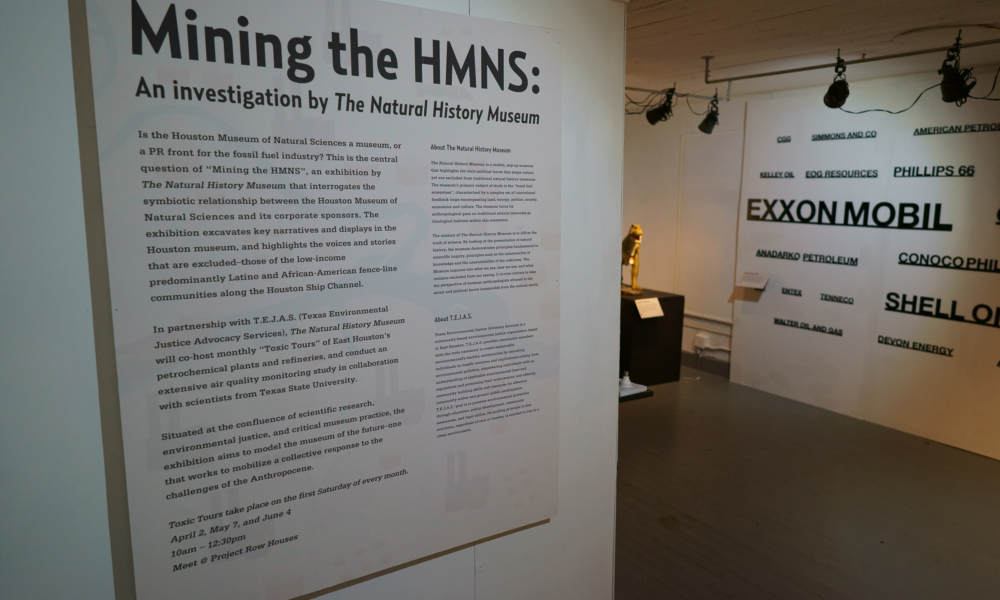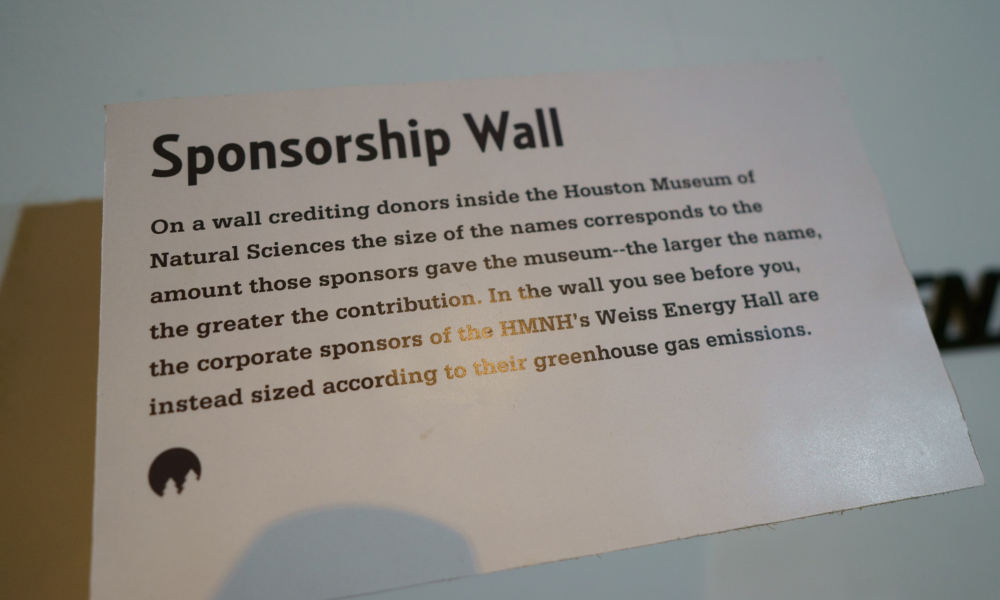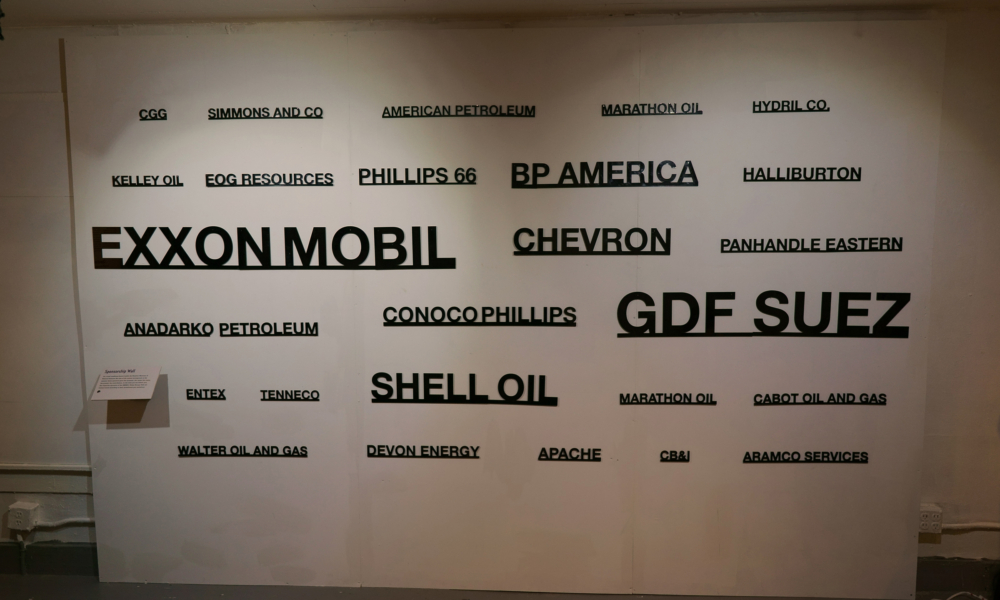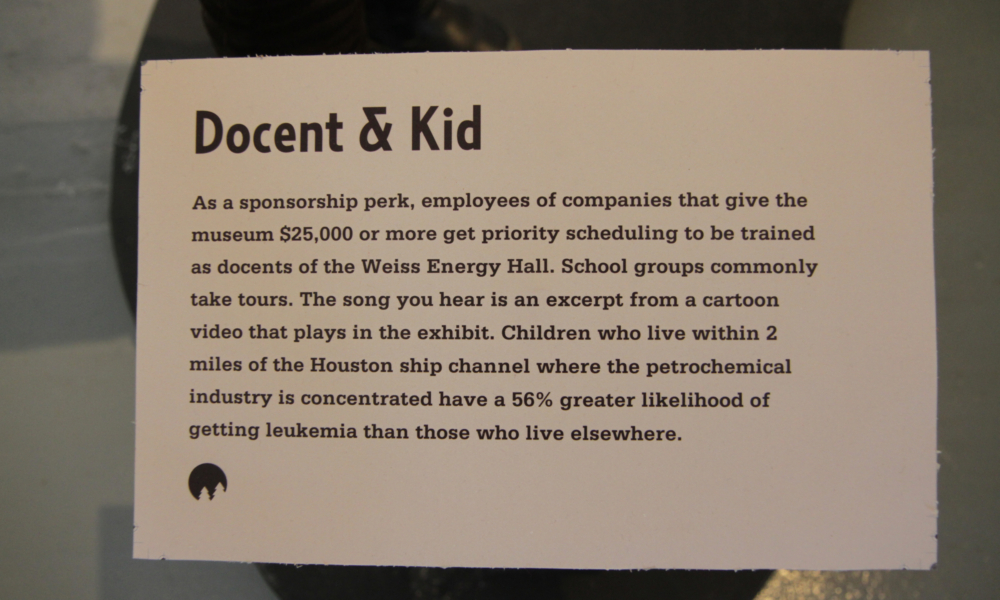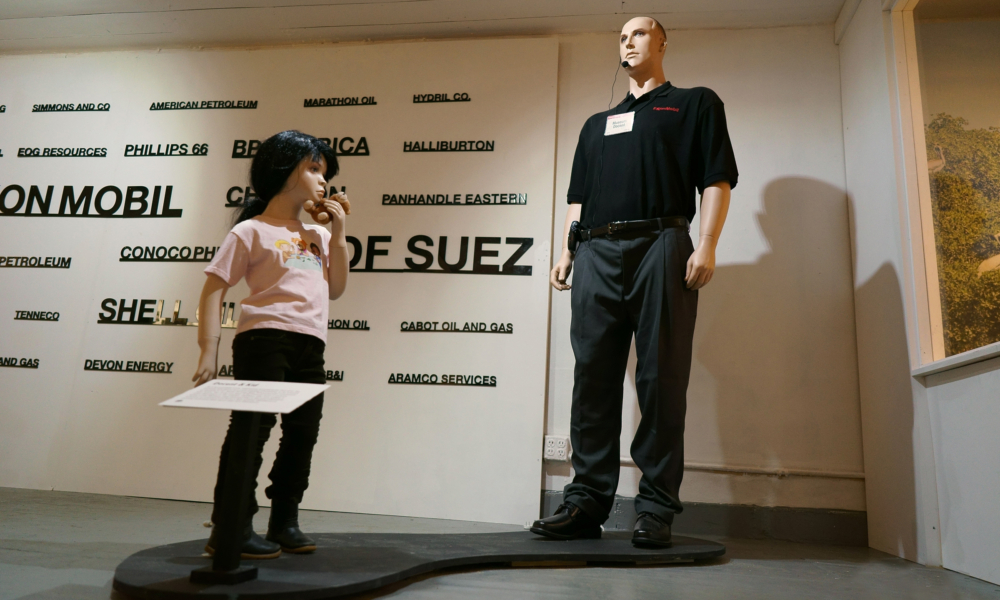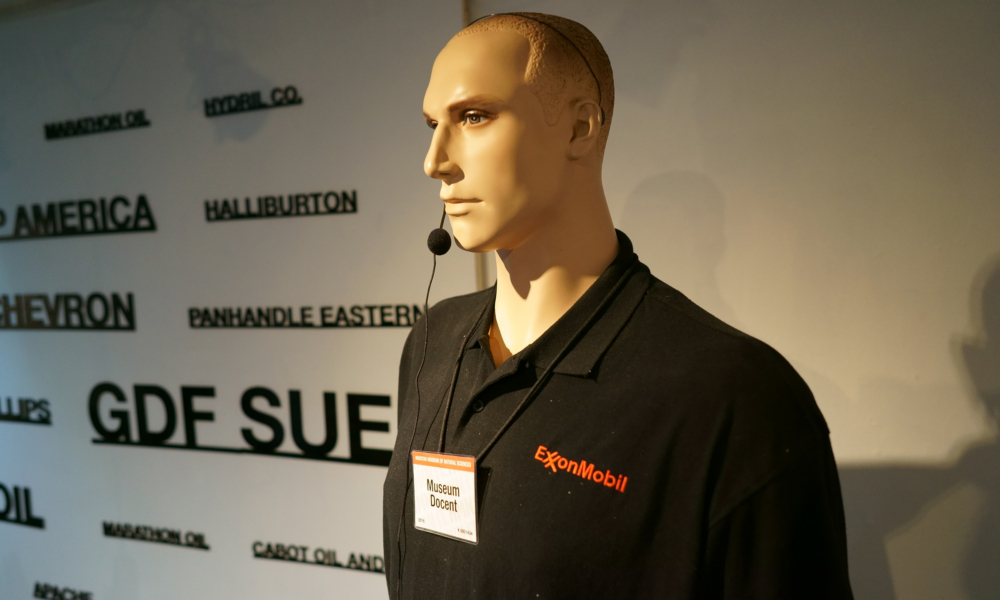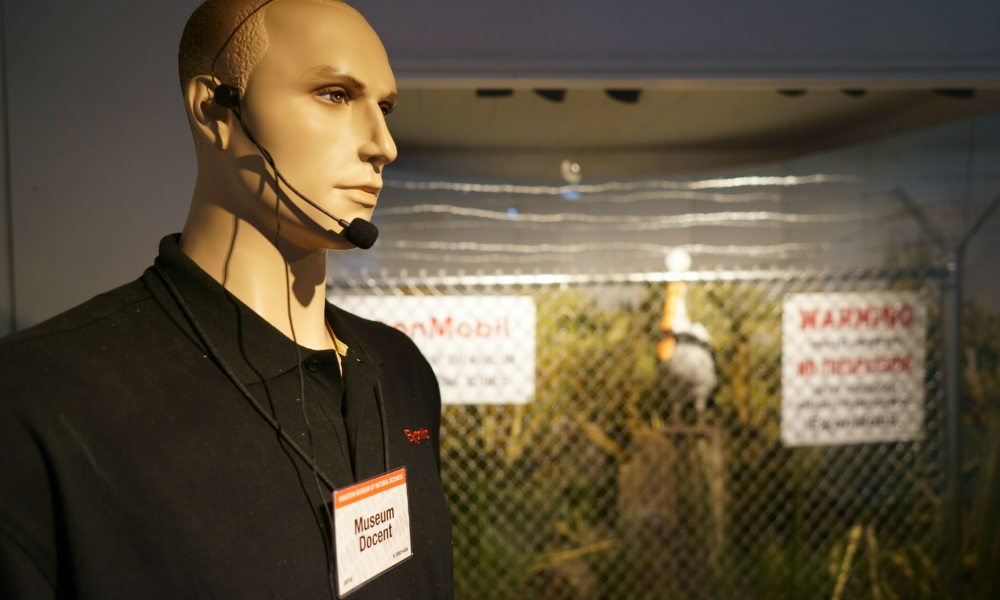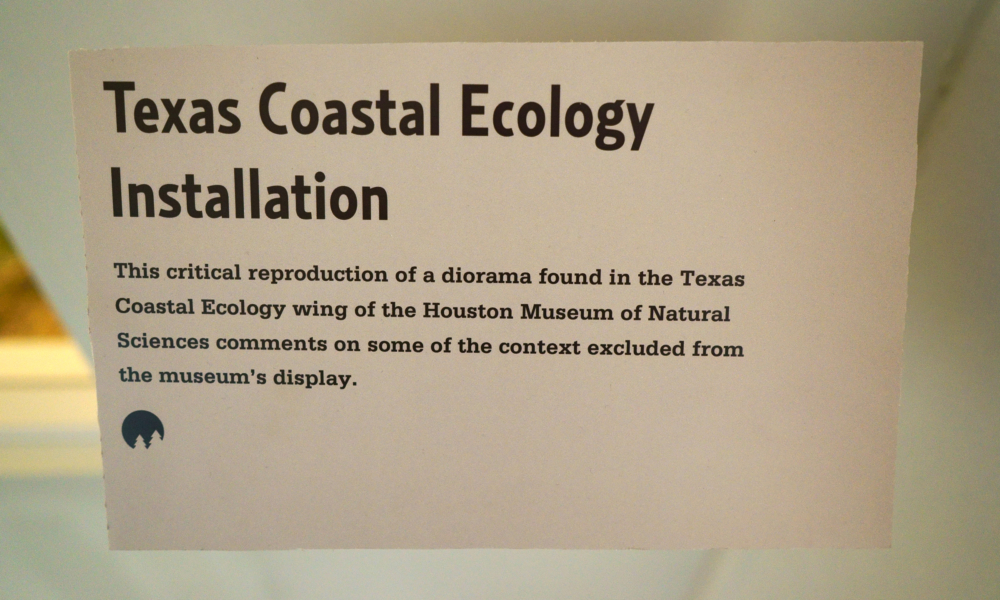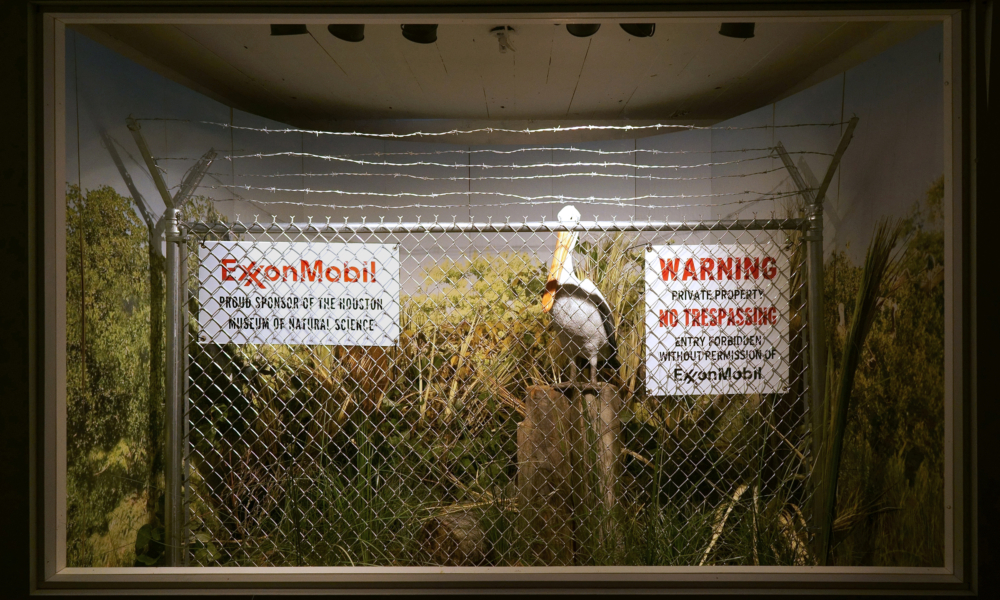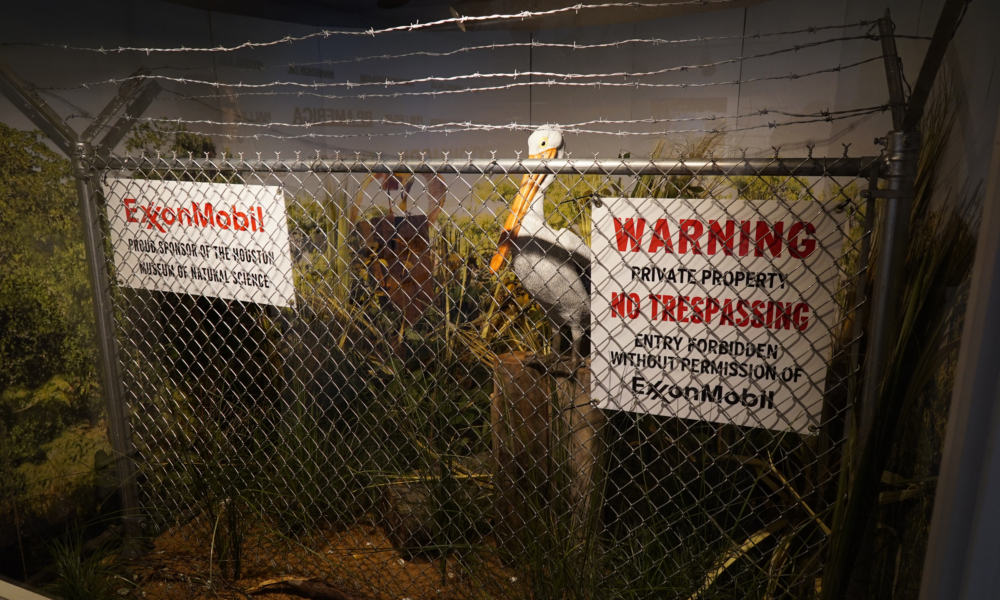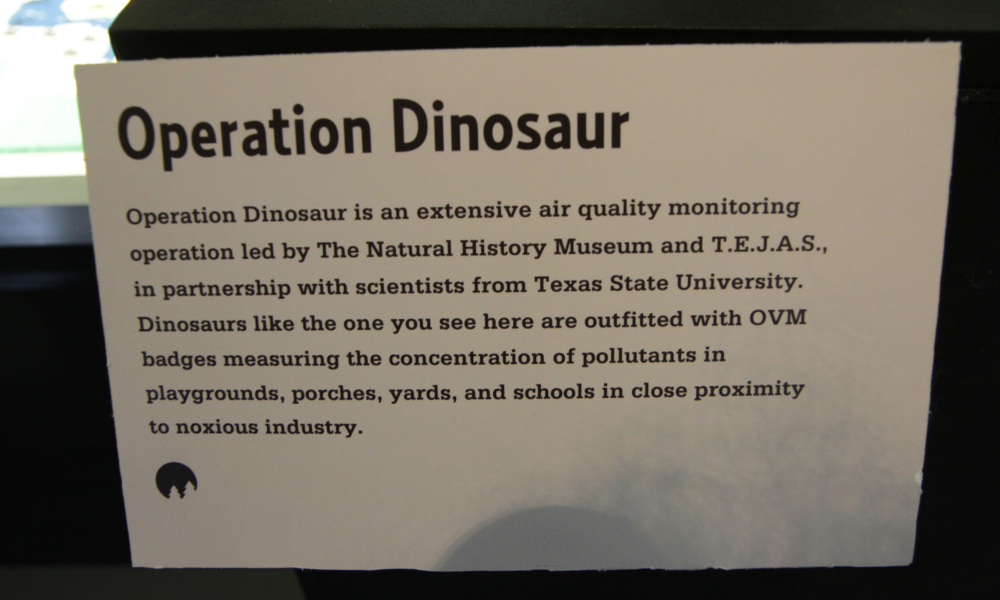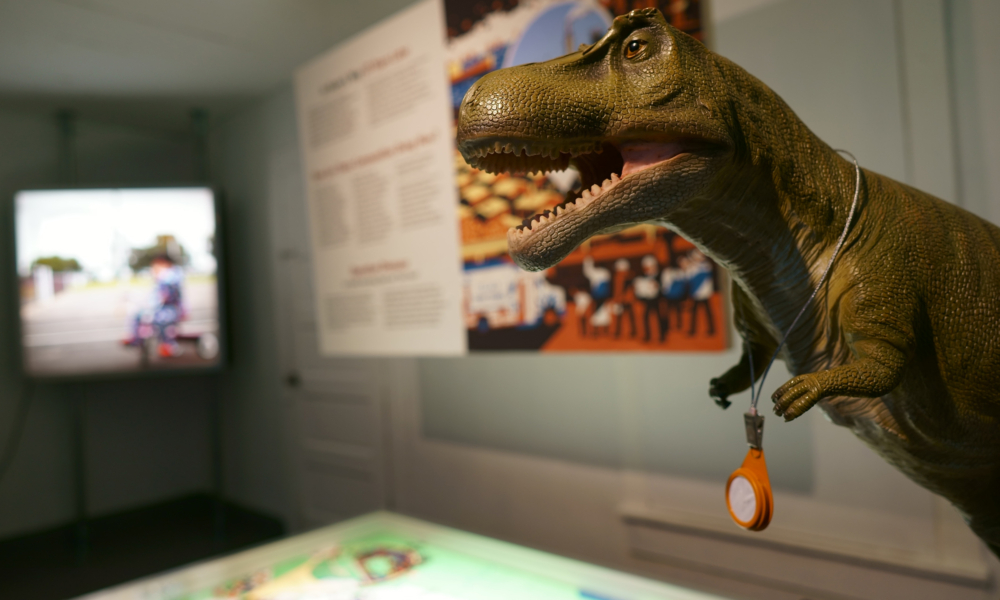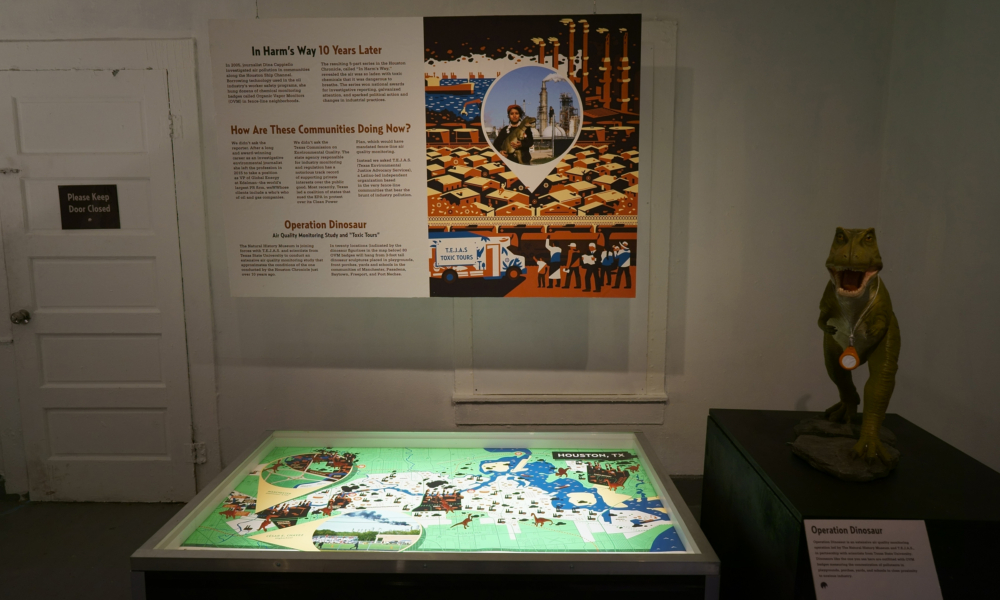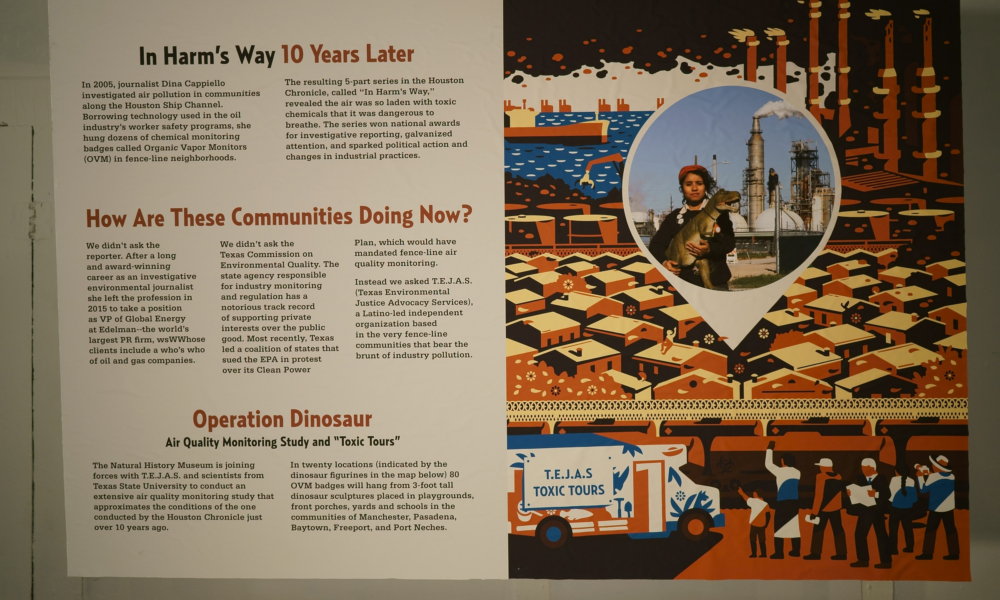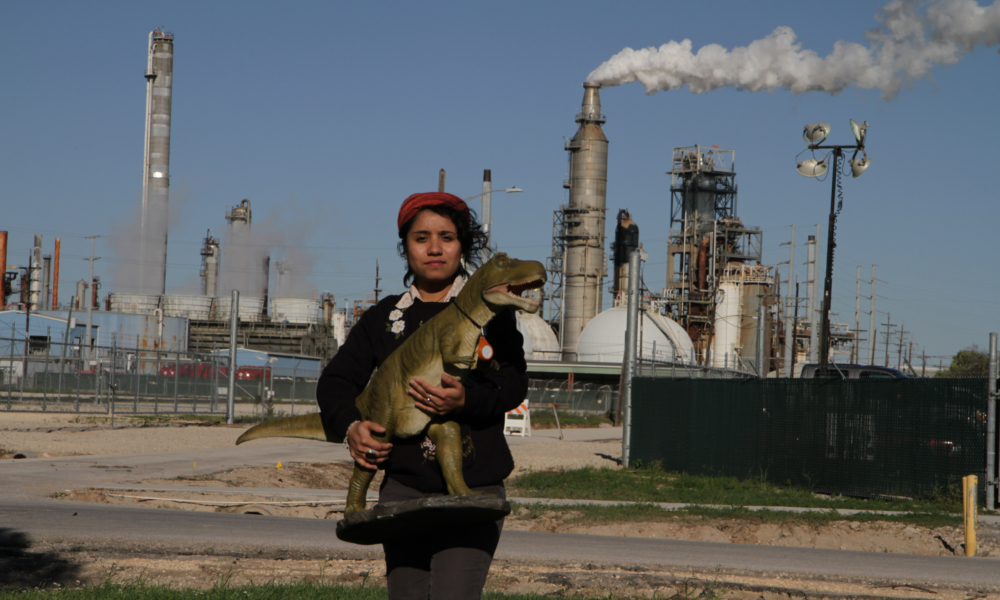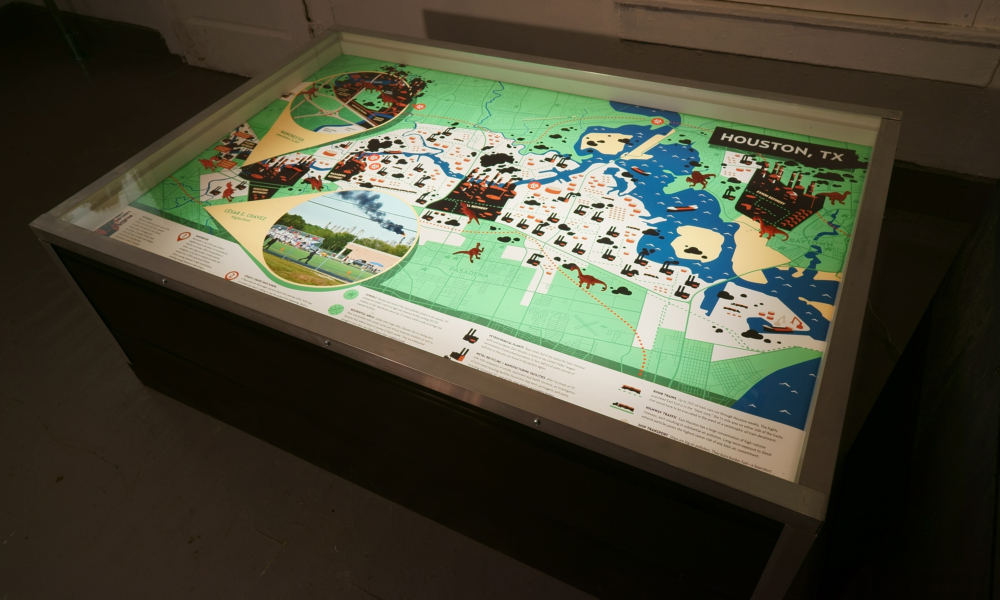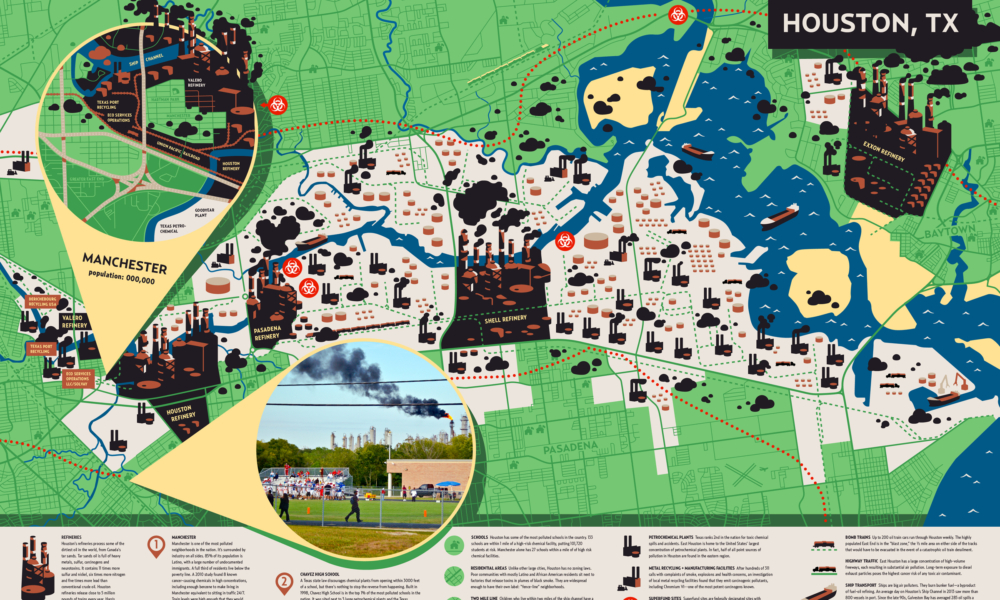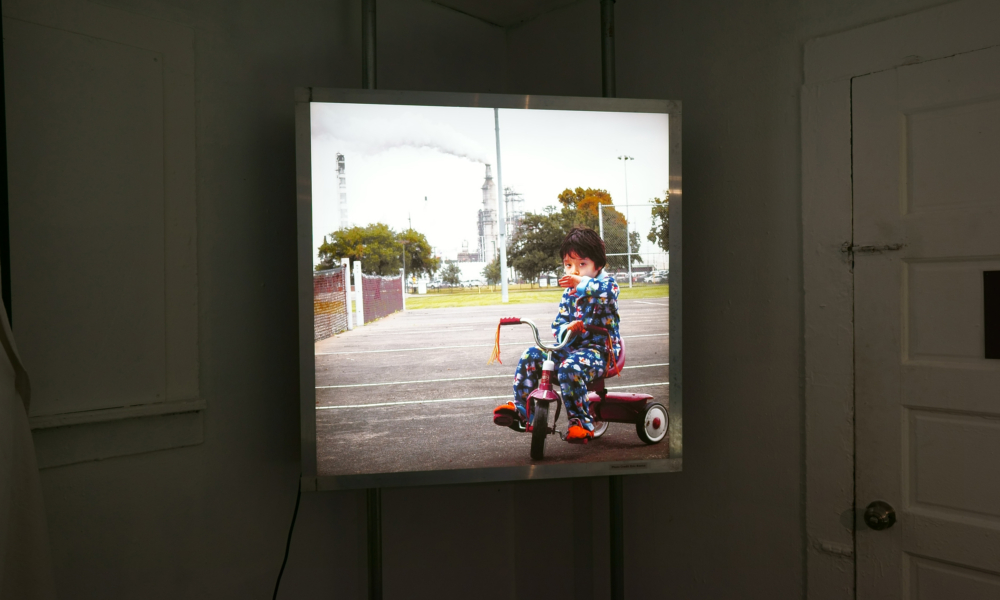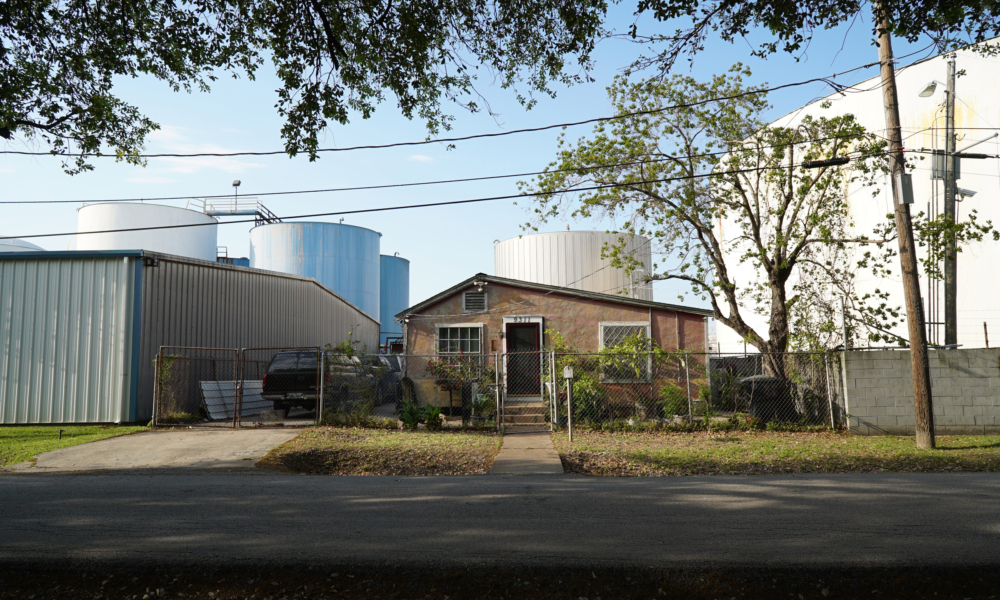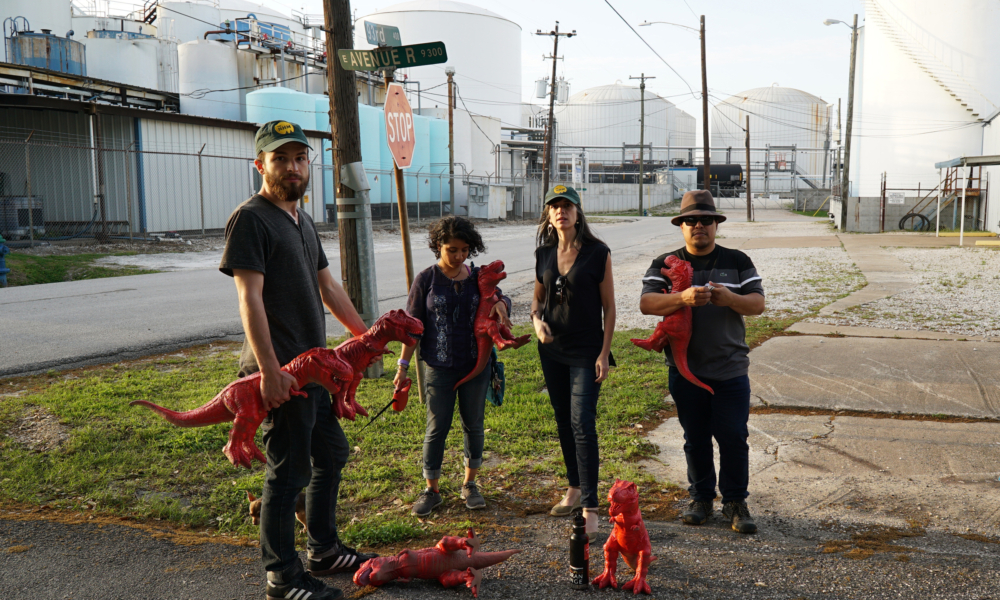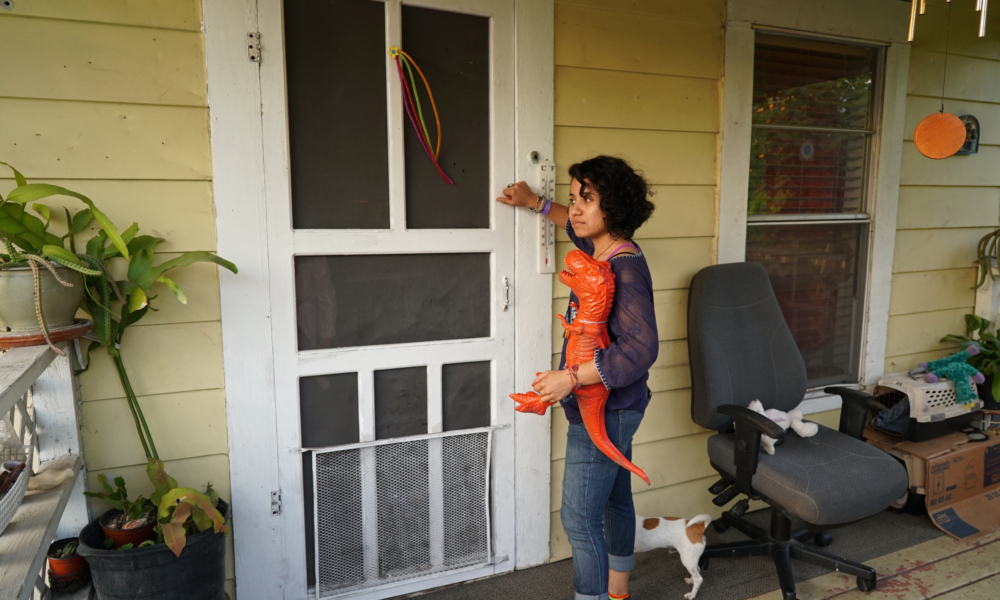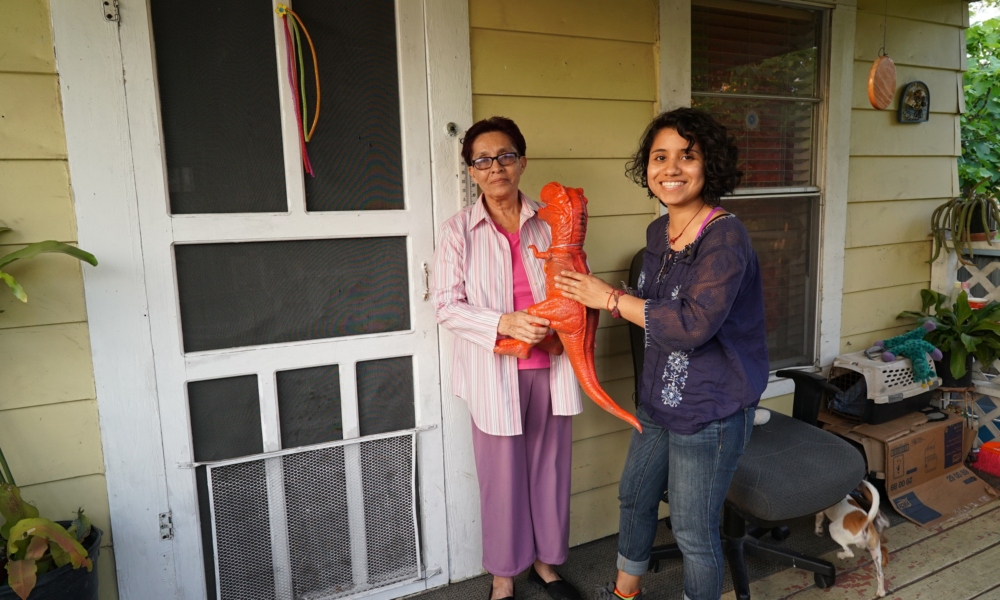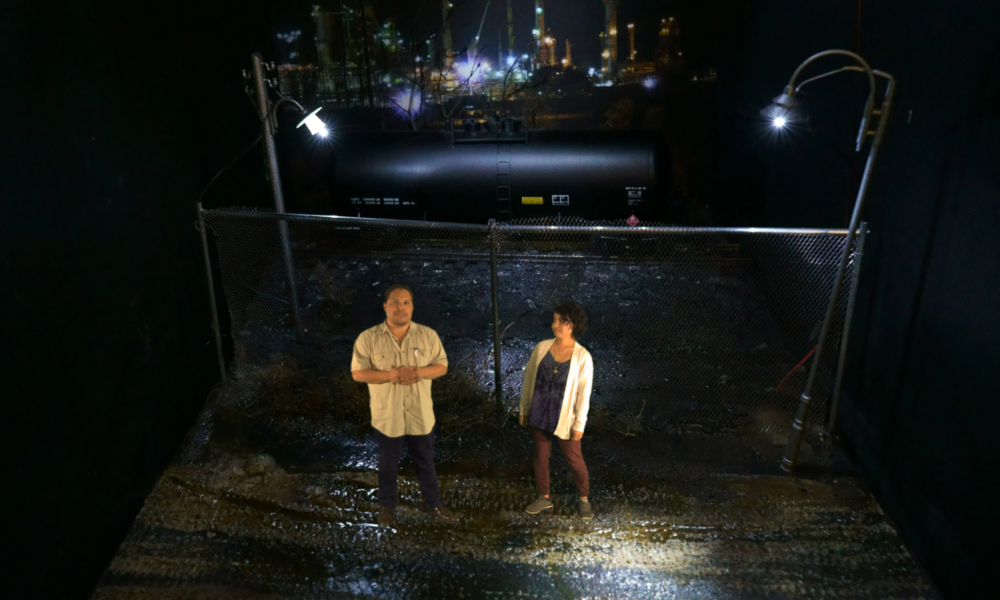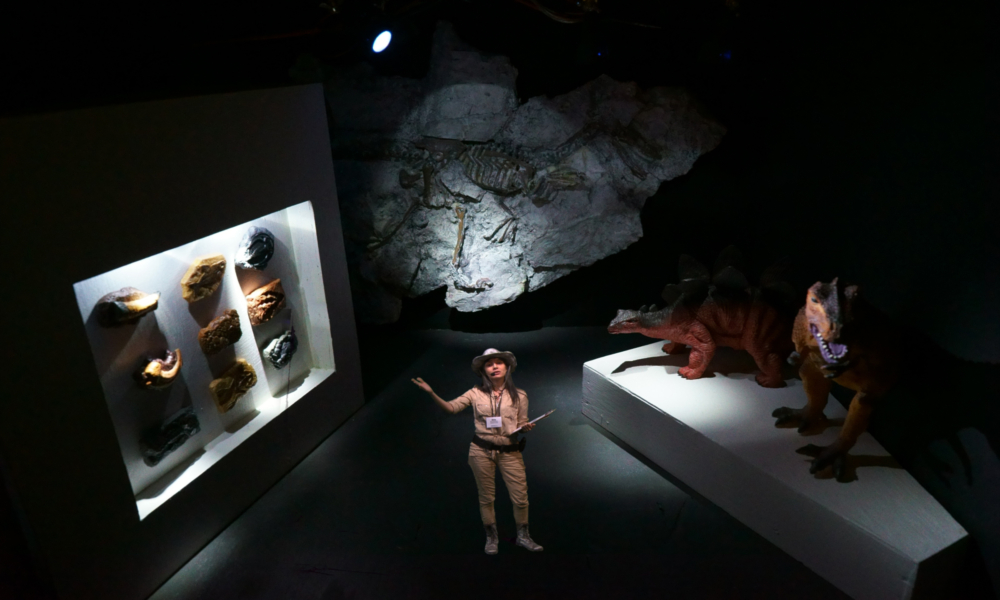In 2016 we teamed up with TEJAS (Texas Environmental Justice Advocacy Services) to launch an exhibition at Project Row Houses, a cultural institution in Houston’s Third Ward. Titled “Mining the HMNS: An Investigation by The Natural History Museum“ it highlighted the voices and stories that are excluded from the local city science museum’s Energy Hall: those of the predominantly low-income Latino and African-American communities living in the shadow of refineries and petrochemical plants.
Situated at the confluence of scientific research, environmental justice, and critical museum practice, the exhibition aimed to model the museum of the future–one that works to mobilize a collective response to the challenges of the Anthropocene.
Video Tour & Slide Show
“Peppers Ghost” Hologram Tours in Mini-Dioramas
Operation Dinosaur
Over the months while the exhibition was up, we collaborated with local environmental justice group T.E.J.A.S. and scientists from Texas Southern University on a series of monthly “toxic tours” and a citizen science air quality monitoring study in the neighborhoods abutting the world’s largest petrochemical hub. Dubbed “Operation Dinosaur”, it approximated the conditions of a landmark study conducted by the Houston Chronicle a little over 10 years ago which revealed high concentrations of several cancer-causing chemicals in the air of East Houston’s fence-line communities.
Given that the EPA’s Clean Power Plan–which would have mandated fence-line community monitoring–is in limbo (thanks to a lawsuit led by the state of Texas), it’s our hope this independent study may serve to highlight the need for fence-line monitoring.
Press Coverage
Already it seems it has — the Houston Chronicle ran a sympathetic editorial that highlights the influence of fossil fuel companies in Houston and persistent air quality concerns in low-income communities of color living in proximity to industry:
“The exhibit focuses a skeptical and irreverent magnifying glass on the Houston Museum of Natural Science. The provocative question that this exhibit poses is whether the HMNS is a “pr front for the fossil fuel industry?”
“There’s an academic truth in this criticism of fossil-fueled donations – you won’t find much about global warming or benzene pollution in the HMNS’ Weiss Energy Hall.”
“Money can breed influence, even unconsciously. Oil has done a lot of good for Houston, but there is no check big enough to buy someone the right to make risky chemical alterations to air they don’t own and others must breathe. Ten years ago, that was the message from City Hall. We’re waiting to hear it echoed from a new administration.”
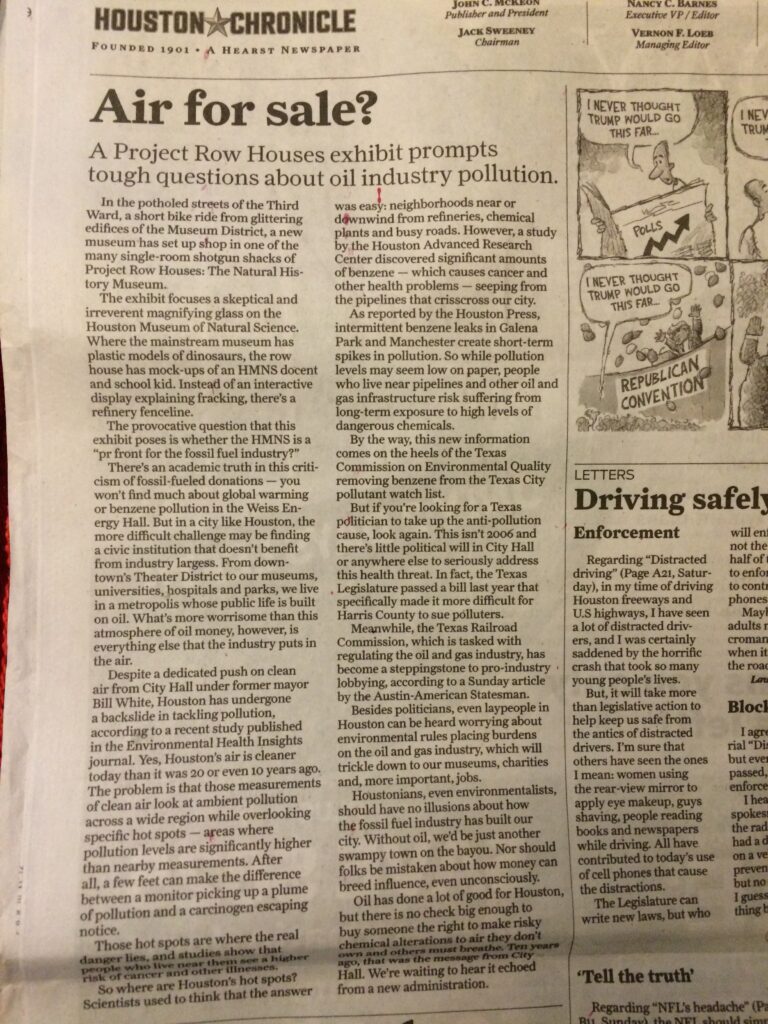
The environmental news blog Triple Pundit gave a shout-out to the international movement for #FossilFreeCulture, and applauded our critique of the influence of oil and gas money in science museums:
“Now the Houston Museum of Natural Science (HMNS), one of the most visited museums in the U.S., finds itself coming under scrutiny. A coalition of non-profits is suggesting that the HMNS is a front for oil and gas companies. The instigator is The Natural History Museum, a mobile museum that seeks to “highlight the socio-political forces that shape nature.” Insisting that corporate money has perverted the pursuit of science, the organization that runs The Natural History Museum accuses corporations of funding museums and exhibitions with the ulterior motive to enhance their agenda.”
“Hence this group, which includes the journalist Naomi Klein and co-founder of the International Physicians for the Prevention of Nuclear War (a 1985 Nobel Peace Prize Winner), Eric Chivian, is trying to take science back for all of society, not just for the well-funded few.”



